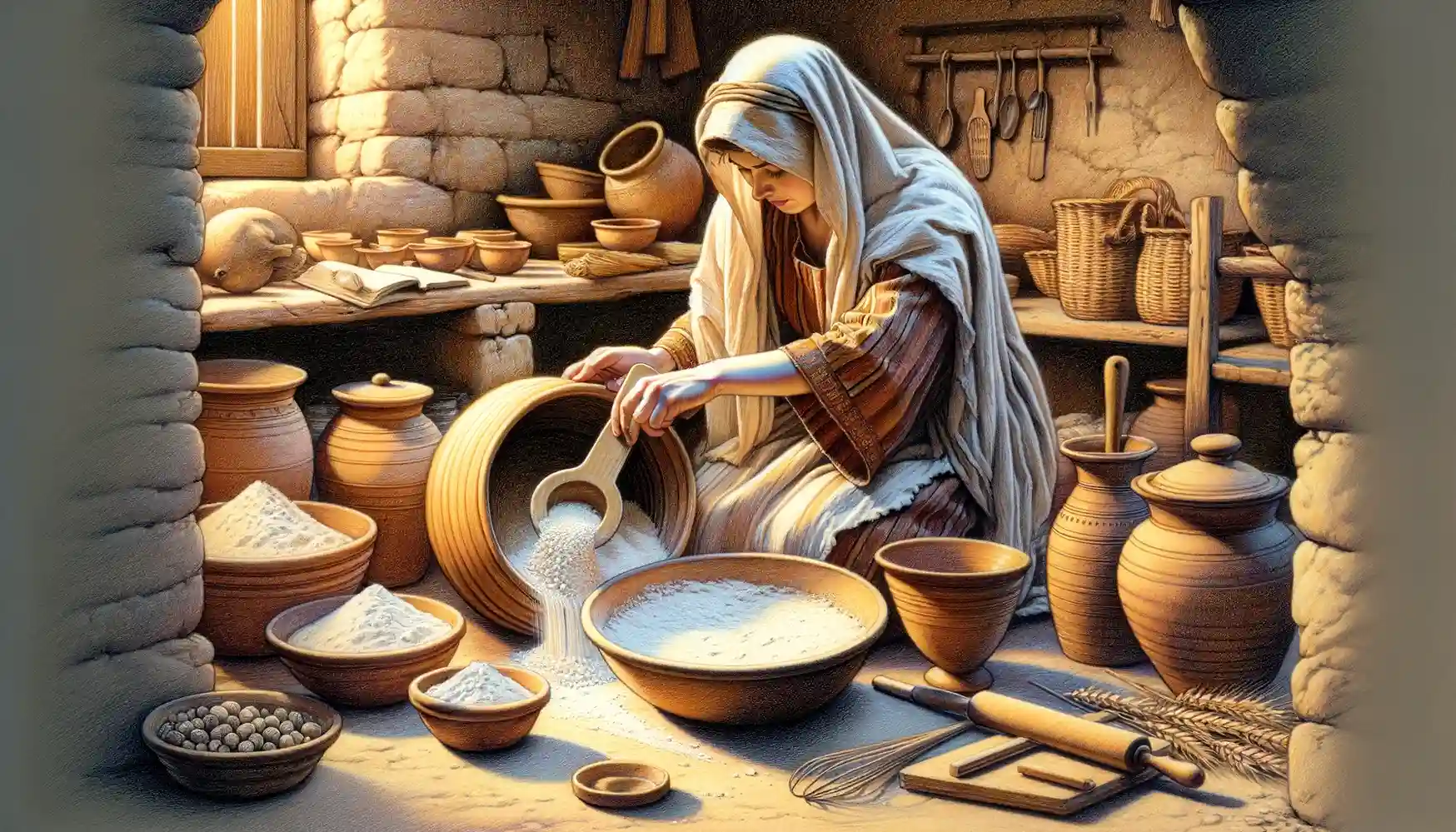
The Parable of the Yeast (Leaven)
The Parable of the Yeast, also known as the Parable of the Leaven, is a brief but deeply symbolic teaching of Jesus found in the Gospels of Matthew and Luke. Here are some quick facts about this parable:
- Biblical References: The parable is recorded in Matthew 13:33 and Luke 13:20-21. Each version presents the parable in a context emphasizing the Kingdom of Heaven.
- Content of the Parable: The parable describes a woman who mixes a small amount of yeast (leaven) into a large amount of flour (three measures, enough to feed several people) until the whole batch of dough has risen.
- Symbolism of Yeast: In Jewish thought, yeast often symbolized corruption and sin due to its fermenting nature, but Jesus repurposes this element to symbolize the Kingdom of Heaven’s subtle but transformative power.
- The Kingdom of Heaven: The key message of the parable is the transformative influence of the Kingdom of Heaven. It starts from small beginnings but grows and permeates through all aspects of life, society, or a person’s heart, much like yeast causes dough to rise.
- Feminine Imagery: The use of a woman as the central figure in this parable is noteworthy, especially given the cultural context of the time. It underscores the inclusive nature of Jesus’ messages and the Kingdom of Heaven.
- Theological Significance: Theologically, the parable underscores the pervasive and growing influence of God’s kingdom, which begins in an almost imperceptible way but eventually transforms everything.
The Parable of the Yeast, found in Matthew 13:33 and Luke 13:20-21, offers a profound metaphor for the Kingdom of Heaven. It’s a concise narrative with deep theological and symbolic meanings that reveal the nature and expansion of God’s kingdom. Here’s a detailed analysis of this parable:
Context and Placement
The parable appears in a sequence of teachings by Jesus that use everyday experiences and objects to describe the mysterious and profound nature of the Kingdom of Heaven. Placed among other parables about growth and transformation, such as the Parable of the Mustard Seed, it underscores the theme of small beginnings leading to significant outcomes.
The Imagery of Yeast
Yeast, or leaven, in biblical times, was often a symbol of corruption and sin, notably in the Passover tradition where unleavened bread signifies purity and separation from old corrupt practices. However, Jesus subverts this traditional symbolism to illustrate how the Kingdom of Heaven works internally and transformationally. Unlike the visible growth of a mustard tree, described in the preceding parable, the work of yeast is hidden within the dough, emphasizing the internal and pervasive nature of divine influence.
The Action of the Woman
The woman in the parable takes a small amount of yeast and mixes it into about fifty pounds of flour, an enormous amount that would feed a large group. This action is not only practical but deeply symbolic. The mixing process, which ensures that the yeast affects all the dough, represents thorough and comprehensive transformation. The use of a woman as the protagonist in this narrative highlights the inclusive and universal reach of Jesus’ message, as women often played background roles in contemporary societal narratives.
Theological Interpretations
- Transformation: The yeast transforms the flour from within, suggesting how the Gospel changes individuals and communities internally, influencing thoughts, actions, and structures.
- Growth: The Kingdom of Heaven begins in a small, almost insignificant way but grows to influence all that it touches, much like yeast causes dough to rise and expand beyond its original volume.
- Inclusivity: The role of the woman can be seen as a metaphor for how the Kingdom of Heaven is accessible and relevant to all people, regardless of gender or social status.
Implications for Believers
The message of the parable is both encouraging and challenging for followers of Christ. It suggests that the influence of the Kingdom is not always overt or immediately apparent but is nonetheless working powerfully. For the individual believer, it reassures that small, seemingly insignificant acts infused with faith and guided by the teachings of Jesus can lead to profound changes. For communities, it offers a vision of gradual transformation that begins with the few and spreads to the many, ultimately encompassing all aspects of life.



